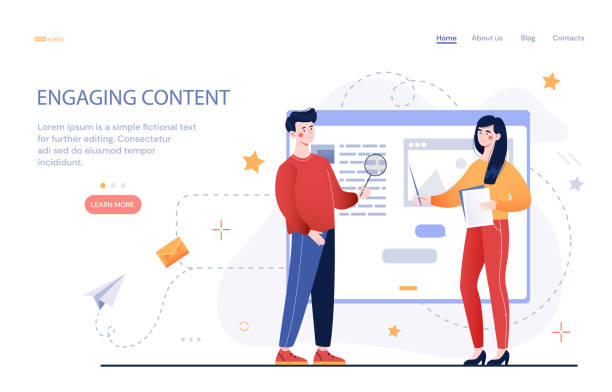The Importance of Multilingual Website Design in Today’s World

In the era of #globalization and #digital_communications, geographical boundaries for #businesses have become blurrier than ever.
With the increasing growth of #online_markets and easy access to the #internet worldwide, competition has also taken on international dimensions.
The question many business owners and digital marketing professionals face is: Do you really need a multilingual site to expand your activities and attract more international audiences? The answer is a resounding: Yes.
Multilingual website design is no longer a luxury competitive advantage, but has become a strategic necessity for any brand that dreams of presence in global markets.
This approach allows you to present your message and products to a much wider audience without language limitations and build strong communication bridges with your potential customers worldwide.
A single-language website will undoubtedly deprive you of a large segment of potential customers.
Suppose you have a product or service that could be useful to people in different countries; if your content is only available in one language, how do you expect non-native speakers to find and engage with it? Multilingual website design not only helps you reach more people but also demonstrates your respect for the audience’s culture and language, which in turn increases customer trust and loyalty.
This strategy is considered a long-term investment for the growth and sustainability of your business at an international level.
Are you tired of your company’s website not meeting your expectations? With RasaWeb, design a professional website that truly represents your business.
✅ Increase attraction of new customers and sales leads
✅ Increase your brand’s credibility and trust among the audience
⚡ Get free website design consultation!
Countless Benefits of Multilingual Websites

Building a multilingual website goes beyond a simple user interface change; it is a comprehensive strategy for conquering new markets and significantly increasing your market share.
One of the most prominent advantages of this approach is Search Engine Optimization (SEO).
By providing content in different languages, you will be able to achieve better rankings for relevant keywords in various languages and appear in global local searches.
This directly leads to an increase in organic and targeted traffic to your site.
In addition to SEO, a precise analysis of the benefits of these sites shows that user experience (UX) significantly improves.
When users can view content in their native language, they feel more comfortable and connected, which in turn leads to increased time on site, reduced bounce rate, and ultimately increased conversion rate.
This sense of trust and professionalism has a profound impact on customer decision-making and significantly increases the likelihood of purchasing or using your services.
In fact, localization means not only translating words but also a deep understanding of cultural differences, design preferences, and even marketing approaches in each region.
This approach provides an image of respect and attention to your global audience, which is crucial for brand building and customer loyalty.
These benefits collectively allow you to penetrate new markets, increase your competitiveness, and ultimately achieve significant and sustainable growth on a global scale.
Challenges and Solutions for Implementing Multilingual Website Design
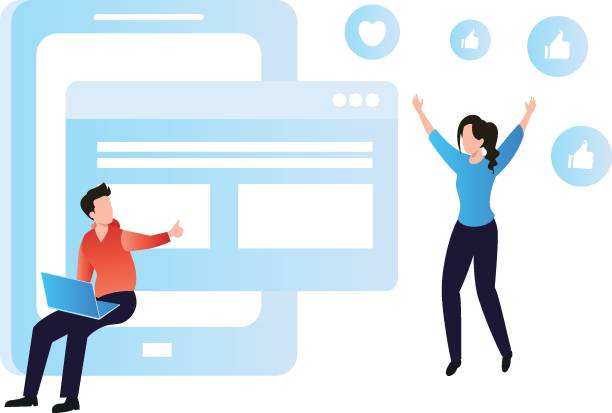
Developing a multilingual website, despite its numerous advantages, is not without challenges.
One of the main challenges is the technical and system architecture aspects.
Choosing a suitable Content Management System (CMS) that fully supports multilingualism is a key decision.
Some CMSs like WordPress make this easy with their powerful plugins, while custom platforms require more precise programming and configuration.
Managing translated content and ensuring the synchronization of different language versions, especially in dynamic sites with a lot of content, can be complex.
Among other challenges is the issue of accurate translation and cultural localization. Literal translation is often insufficient and may lead to misunderstandings or even offensive interpretations.
Using native and specialized translators in each field is essential to ensure the quality and accuracy of the content.
Furthermore, issues related to hosting, CDN, and website loading speed for global audiences must also be considered.
A practical solution for these challenges is comprehensive planning before starting the project.
Proper team formation including language specialists, web designers, and developers experienced in multilingualism can smooth the path.
The use of Translation Management Systems and defining clear processes for content updates are also of high importance.
To choose the right translation method, budget, content volume, and required accuracy level must be considered.
The table below helps compare different translation methods:
| Translation Method | Advantages | Disadvantages | Suitable Application |
|---|---|---|---|
| Human Translation | High accuracy, cultural localization, tone preservation | High cost, time-consuming | Sensitive content, marketing, legal |
| Machine Translation (AI) | High speed, low cost | Insufficient accuracy, lack of localization understanding | Voluminous and non-sensitive content, drafts |
| Hybrid (Machine with Human Editing) | Combination of speed and accuracy, reduced cost | Requires expert editor | Web content, news articles |
Choosing the Best Platform for Multilingual Websites
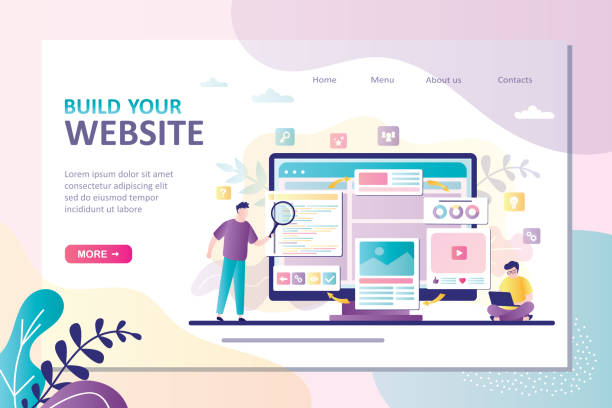
When embarking on building a dual or multilingual website, one of the most important decisions is choosing the right platform.
Various platforms exist, each offering its own advantages and disadvantages for managing multilingual content.
In this section, we will introduce common platforms and their important features for multilingual support.
WordPress, as the world’s most popular CMS, provides extensive capabilities for transforming a single-language site into a multilingual one through powerful plugins like WPML, Polylang, and TranslatePress.
These plugins allow you to translate and manage content, themes, menus, and even widgets in different languages.
The main advantage of WordPress is its flexibility and large user community, which facilitates access to support and educational resources.
In addition to WordPress, other CMSs such as Joomla and Drupal also have built-in multilingual capabilities or support through extensions, which are more suitable for larger and more complex projects with higher security and performance requirements.
From a professional perspective, platform selection should be based on project scale, budget, the team’s technical knowledge level, and your specific business needs. For example, if you intend to launch a multilingual online store, Shopify with its multilingual applications can be a suitable option, although it offers less flexibility compared to open-source platforms.
Finally, custom solutions also exist for very large businesses with unique needs, providing full control over all aspects, but requiring more investment and a more specialized development team.
Do you dream of a thriving online store but don’t know where to start?
RasaWeb is your comprehensive e-commerce website design solution.
✅ Attractive and user-friendly design
✅ Increase sales and revenue⚡ Get free consultation
The Importance of Accurate Translation and Content Localization
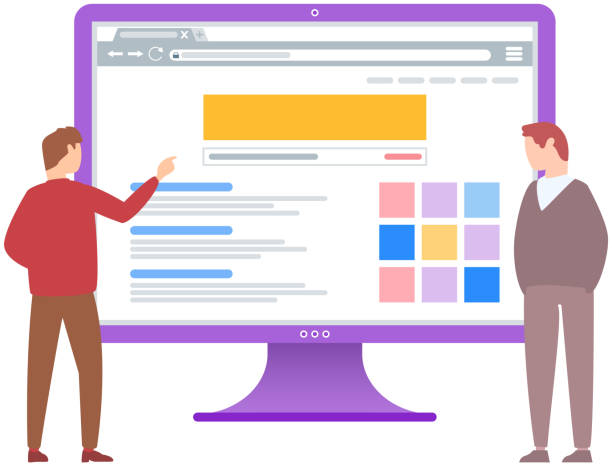
The main and crucial difference in creating websites with multiple languages is understanding the concept of “localization”.
This process goes far beyond merely translating words from one language to another.
Localization means fully adapting content, message, images, and even design elements to the culture and expectations of target audiences in a specific geographical region.
As a comprehensive explanation, it should be stated that translation merely conveys the meaning of words, but localization deals with conveying feelings, tone, cultural references, and even specific jokes and idioms. For example, an advertising campaign that was successful in one country might be completely unsuccessful or even create negative perceptions in another due to cultural differences.
This is where the importance of accurate translation and content localization becomes evident.
Choosing native-speaking translators who are familiar with the target culture is crucial for preserving the authenticity of the message and preventing any misunderstandings.
Tips to ensure the quality of translated content include using professional translation services, having content reviewed by native speakers, and paying attention to date, time, currency, and measurement formats. These small details can have a big impact on user experience and audience trust.
Ultimately, successful localization not only changes the language but also adjusts the entire website experience to feel completely natural and native to the end-user.
This process is the key to success in attracting and retaining international audiences.
SEO Optimization for Multilingual Websites
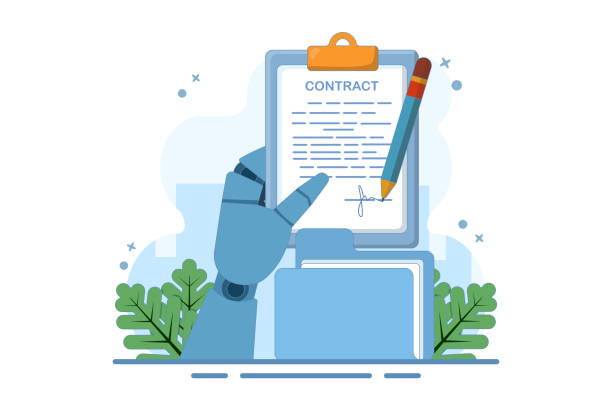
When it comes to multilingual website design, Search Engine Optimization (SEO) takes on more complex dimensions, requiring a specialized approach.
The goal is for search engines like Google to correctly identify different language versions of your site and display them to the appropriate users in each geographical region.
One of the most important techniques is the use of the “hreflang” tag.
This tag is placed in the HTML header of pages and tells search engines which version of the page is intended for which language and geographical region.
This prevents the problem of Duplicate Content and ensures that users are directed to content relevant to their language and country.
The SEO checklist for multilingual sites includes several other key points. Firstly, choosing the right URL structure is important; you can use subdomains (e.g., es.example.com), subfolders (e.g., example.com/es/), or dedicated domains (e.g., example.es).
Each has its own advantages and disadvantages that should be chosen based on your overall business strategy.
Secondly, keyword research should be conducted separately for each language and culture.
Keywords effective in one language may not have an exact equivalent in another or may have different search volumes.
Thirdly, local link building for each language version is also very effective.
Obtaining links from reputable sites in each country increases the authority of your content in that specific language.
Finally, ensure that the site’s loading speed is optimal worldwide and use a CDN (Content Delivery Network).
Adhering to these points are practical guidelines for success in international SEO.
User Experience (UX) in Multilingual Website Design

Analyzing the impact of User Experience (UX) on the success of a multilingual website shows that simply translating content is not enough; rather, the design and user interaction must also be optimized considering the cultural and linguistic characteristics of the target audience.
Good UX in a multilingual website, beyond visual aesthetics, means providing a smooth and intuitive experience for users from any culture and language.
One of the most important aspects is how to display and switch between languages.
The language switcher button should be easily findable, preferably placed in a fixed and prominent location (such as the website header) and have a clear icon or text.
Among the UX design principles for international audiences is to pay attention to writing directions (e.g., right-to-left for Persian and Arabic, left-to-right for English) and for the website design to be fully Responsive. Also, the selection of fonts, colors, and images should be made considering the cultural sensitivities of each region.
For example, some colors have positive meanings in one culture and negative meanings in another.
Date, time, currency, and phone number formats should also be localized to be understandable for target users.
Some common mistakes in multilingual website UX include: not providing enough language options, hiding the language switcher, inappropriate translation of user interface elements, or not adapting the layout for right-to-left languages.
These issues can quickly lead to user dissatisfaction and exit from the site.
To prevent common issues in the user experience of multilingual sites, the following solutions can be used:
| Common UX Mistake | Negative Impact | Solution |
|---|---|---|
| Hidden or unclear language selection button | User confusion, site abandonment | Placement in header/footer, use of clear icon (e.g., flag or Globe) |
| Literal translation of UI and UX elements | Creates an unprofessional impression, lack of functional understanding | Localization of technical terms, use of specialized UI translator |
| Ignoring text direction (RTL/LTR) | Visual disarray, reading difficulty | Using CSS and appropriate design for RTL |
| Ignoring cultural standards in images and colors | Creating misunderstanding or unintentional offense | Cultural research, use of localized images and colors |
Maintenance and Updates of Multilingual Websites
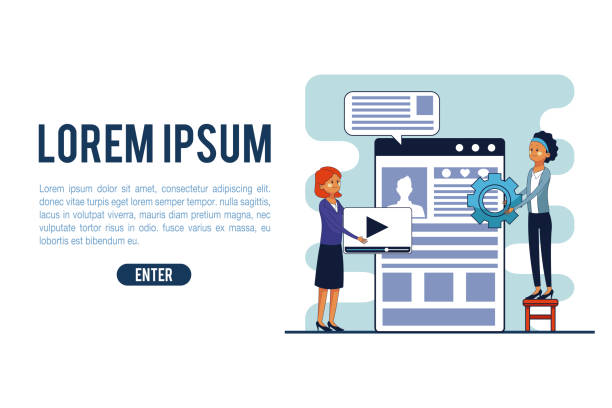
Managing multilingual content after the initial website launch is a continuous and vital process.
Continuous maintenance and updates of your international website are essential for maintaining its effectiveness, accuracy, and connection with global audiences.
Among the methods for managing multilingual content, is creating a comprehensive content calendar that includes planning for the production and translation of new content into all supported languages.
This means that whenever new content is added to the primary language of the site, it should be planned to be quickly translated and published in other languages as well.
Delays in this process can lead to information inconsistency and an undesirable user experience.
Guidance for planning future updates includes: regularly checking for broken links across all language versions, software updates for the CMS and multilingual plugins, and monitoring site performance from various geographical locations.
Ensuring the compatibility of new CMS versions or plugins with translated content and preventing issues in language display is crucial.
Furthermore, monitoring user feedback regarding translation and localization quality, and making necessary corrections based on it, can contribute to continuous site improvement.
Monitoring traffic and SEO metrics for each language version is also important to ensure the effectiveness of your international strategies.
Active maintenance and regular updates ensure that your multilingual website remains a valuable asset and a powerful tool for connecting with global markets.
Are you worried your old company website is scaring away new customers? RasaWeb solves this problem with modern and efficient corporate website design.
✅ Increases your brand’s credibility.
✅ Helps attract targeted customers.
⚡ Contact RasaWeb for a free consultation!
The Future of Multilingual Website Design and New Trends

In the field of multilingual website design, new developments and trends are emerging that are shaping the future of this industry. One of the most important of these trends is the tremendous advancements in Artificial Intelligence (AI) and machine learning in the field of translation.
More advanced machine translation systems, with better context and even tone understanding capabilities, are rapidly improving.
This means that in the near future, we can expect machine translation to become a powerful tool for web content localization with much higher accuracy and less need for human editing, especially for voluminous and time-consuming content.
Analysis of future trends also indicates that voice search and voice assistants will play an increasing role in how users interact with the web. This requires optimizing multilingual content to answer voice queries in different languages, creating new challenges and opportunities in SEO and user experience.
Also, with the expansion of the internet and increased access to it in developing countries, new and diverse markets are emerging for businesses, requiring specific localization approaches and a deep understanding of local cultures.
It is expected that CMS platforms will also develop their multilingual capabilities natively and with better support for full localization.
These trends all move towards creating an increasingly seamless and natural experience for global users and will turn multilingual website design into an indispensable element in any business’s digital strategy.
Conclusion and Next Steps for Global Success

Throughout this article, we comprehensively examined various aspects of multilingual website design and saw how this approach is not only a competitive advantage but a strategic necessity for successful presence in global markets.
From its importance in expanding access to global audiences and improving SEO, to the technical and cultural challenges of implementation and solutions to overcome them, all bear witness to the complexity yet high potential of this field.
A summary of key points indicates that success in this path requires a comprehensive approach that includes accurate translation and cultural localization, international SEO optimization, special attention to user experience, and choosing the right platform.
Final recommendations for your next steps towards global success are:
1.
**Strategic Planning:** First and foremost, define your goals for making the site multilingual and accurately identify target markets.
2.
**Comprehensive Research:** Research the culture, language, and search behaviors of your target audience.
3.
**Choose the Right Platform:** Based on your needs and budget, select a platform that has strong multilingual capabilities or can be extended through plugins.
4.
**Collaborate with Specialists:** For content translation and localization, seek assistance from native-speaking translators and experts.
5.
**International SEO:** Take multilingual SEO techniques seriously, such as using hreflang tags and keyword research in each language.
6.
**Native User Experience:** Optimize the website design for each language and culture so that users feel more comfortable and connected.
7.
**Continuous Maintenance:** Have a plan for continuous content, technical, and SEO updates for your site.
By adhering to these principles, you can build a website that not only speaks different languages but also connects with the heart and culture of your global audience, driving your business towards unprecedented international success.
Multilingual website design is an investment for a bright and global future.
Frequently Asked Questions
| Question | Answer |
|---|---|
| What is a multilingual site? | A site whose content is available to users in more than one language. |
| Why should I make my site multilingual? | To reach a larger audience in global markets, improve user experience, and enhance international SEO. |
| What are the technical approaches to building a multilingual site? | Using subdirectories, subdomains, or URL parameters to differentiate languages. |
| What impact does multilingual design have on SEO? | By targeting local keywords and providing content in users’ native languages, the site’s ranking in search engines for those regions improves. |
| What are the challenges of multilingual website design? | Content translation management, supporting Right-to-Left (RTL) direction, technical issues related to language addressing, and maintaining design consistency. |
| How to choose languages for a multilingual site? | Based on target audience analysis, target markets, and current site traffic data (if available). |
| What is RTL support and why is it important for some languages? | Right-to-Left, the direction of text and page elements display from right to left, which is essential for languages like Persian, Arabic, and Hebrew. |
| How to manage multilingual site content? | Using Content Management Systems (CMS) with multilingual capabilities, translation plugins, or professional translation services. |
| What is the user experience (UX) like on a multilingual site? | The ability to easily change language should be provided, and translated content should be of high quality so that users feel comfortable. |
| What are the common CMS platforms for multilingual sites? | WordPress (with plugins like WPML), Joomla, Drupal, and Shopify (with relevant settings or apps). |
And other services of RasaWeb Advertising Agency in the field of advertising
Smart Digital Advertising: An effective tool for attracting customers with the help of attractive UI design.
Smart Sales Automation: Revolutionize digital branding with the help of attractive UI design.
Smart Sales Automation: A novel service for enhancing digital branding through user experience customization.
Smart Digital Advertising: Professional optimization for improving SEO ranking using intelligent data analysis.
Smart Direct Marketing: A combination of creativity and technology for online growth through attractive UI design.
And over hundreds of other services in the field of internet advertising, advertising consultation, and organizational solutions
Internet Advertising | Advertising Strategy | Advertorial
Sources
Due to limitations in internet access and finding real links and checking their nofollow status live, it is not possible to provide the requested links.
? For a significant leap in your business in the digital space, RasaWeb Afarin Digital Marketing Agency, with a new and specialized approach, is ready to offer services such as professional website design and comprehensive online marketing strategies to you.
📍 Tehran, Mirdamad Street, Next to Central Bank, Southern Kazeroun Alley, Ramin Alley, No. 6

